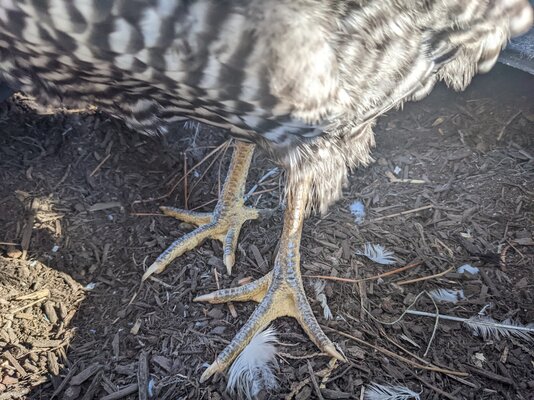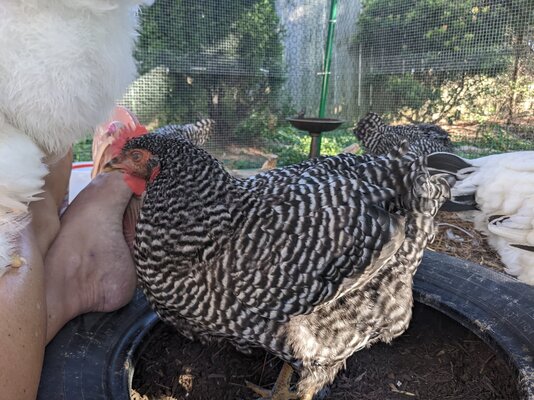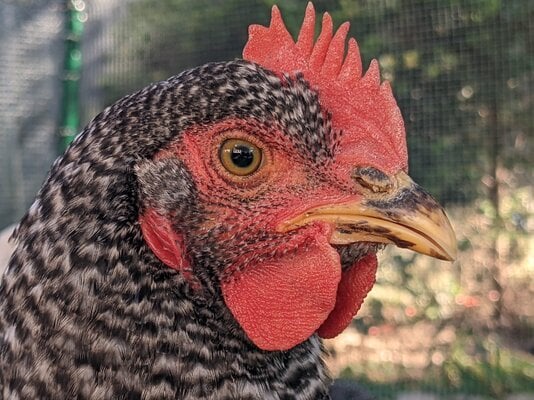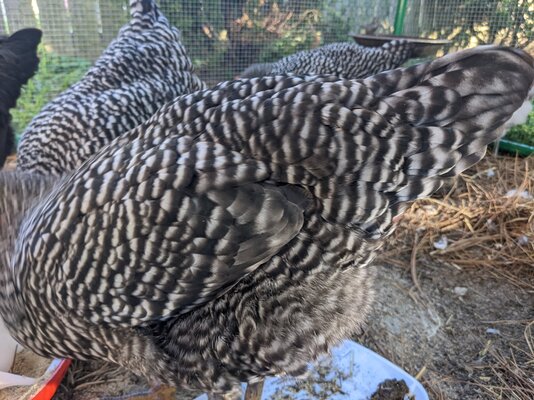Ccort
Crowing
One pic was to show the wash on the legs. 14 weeks old.
I've read that the wash on the legs and the black feathers, versus gray, for this breed indicates female. But the face is dark and fleshy! Would love your take and if you really know your stuff, please educate me! A fan is blowing on him or her in the full body pic. Just FYI on some slightly ruffles feathers.


I've read that the wash on the legs and the black feathers, versus gray, for this breed indicates female. But the face is dark and fleshy! Would love your take and if you really know your stuff, please educate me! A fan is blowing on him or her in the full body pic. Just FYI on some slightly ruffles feathers.







